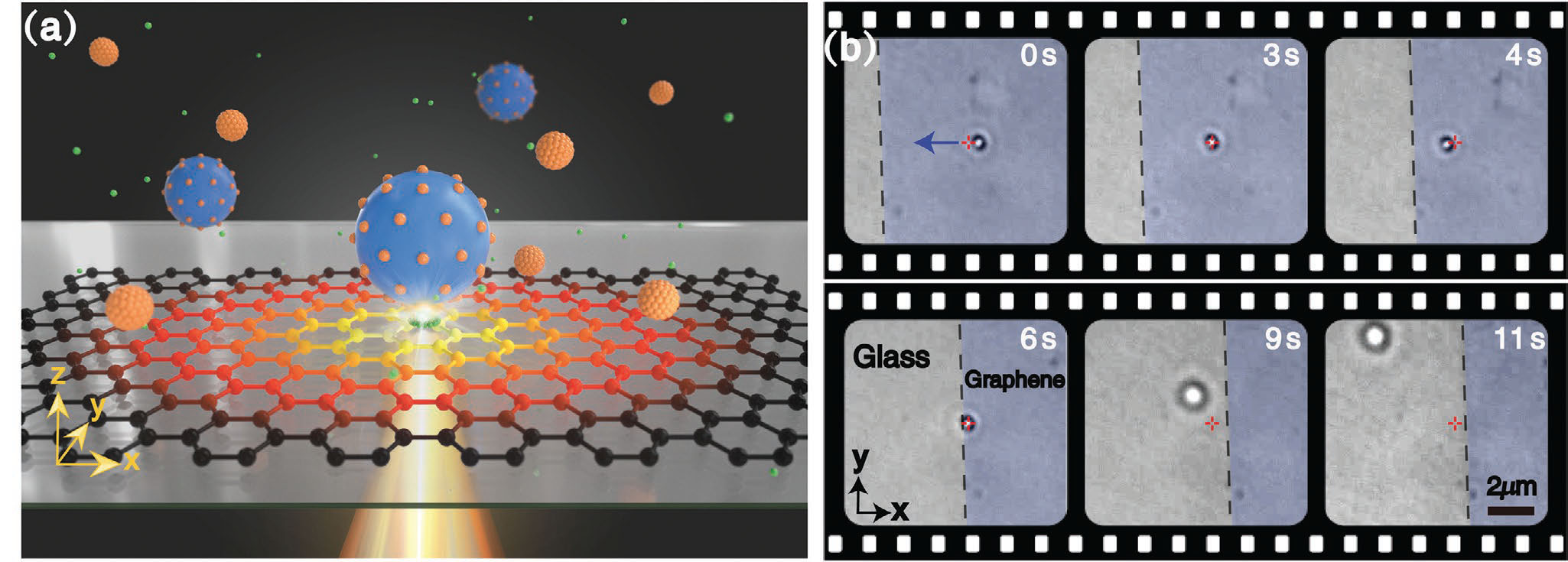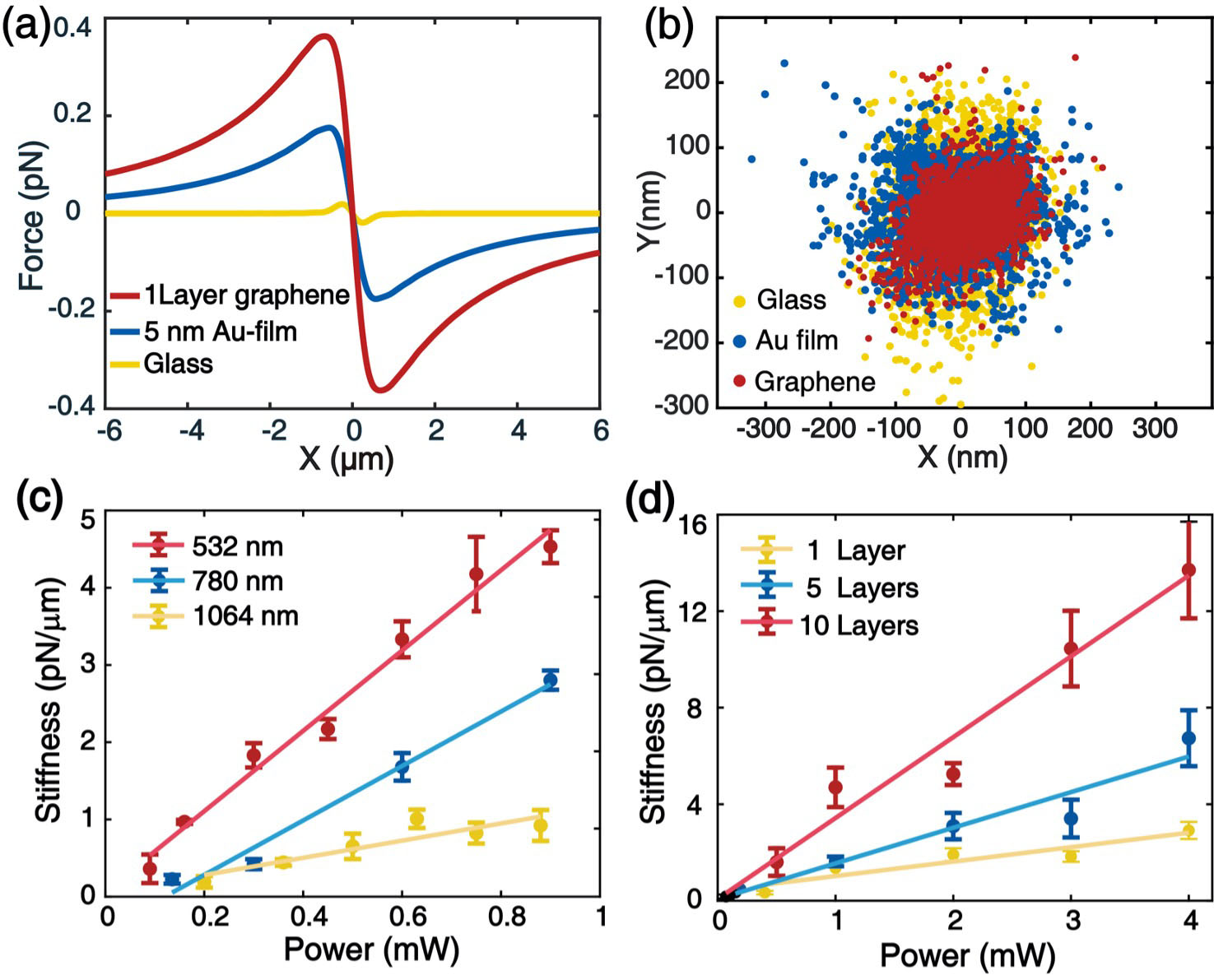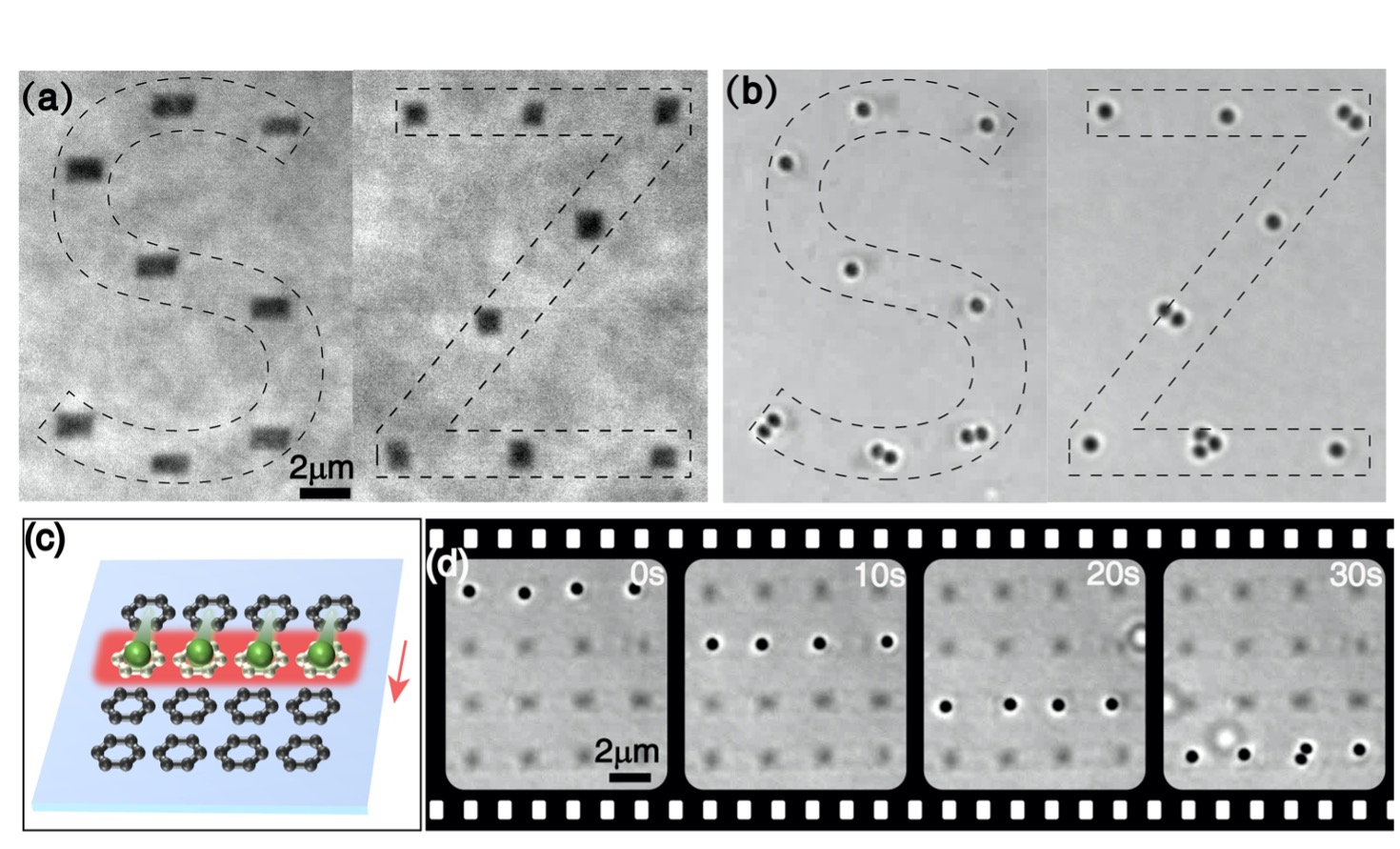| Jan 28, 2022 | |
Improving optical-tweezer technology with graphene |
|
| (Nanowerk Spotlight) Back in 1970, Arthur Ashkin of Bell Laboratories found that radiation pressure – the ability of light to exert pressure to move small objects – could be harnessed to constrain small particles (see the original 1970 paper: "Acceleration and Trapping of Particles by Radiation Pressure"). In 2018, he was awarded half of the Nobel Prize in Physics 'for groundbreaking inventions in the field of laser physics'. | |
| Ashkin's discovery has since formed the basis for the development of optical tweezers, a tool frequently used to control the motion of small biological objects and investigate them. Optical tweezers operate by trapping particles at the focal points of tightly focused laser beams, allowing researchers to manipulate the objects without any physical contact. | |
| This rapidly evolving technology opened up a wide variety of research applications. The ability to manipulate small suspended particles such as cells and micro- and nanoparticles plays an essential role in the advancement of areas ranging from nanotechnology to microbiology and molecular medicine. Optical tweezer tools offer researchers the chance to perform precise force sensing in a fluid environment, for instance by clarifying some of the picoNewton (10-12 N) forces that govern fundamental processes in the cell. | |
| Unfortunately, thermal effects in the focus area generated by the laser beams result in two major problems: one is the possibility of thermal damage to biological samples; the other is that higher laser energies cause stronger Brownian motion, which decreases particle-trapping accuracy, especially for nanoparticles. | |
| To overcome these issues, several optical tweezer techniques such as photoelectric-, thermoelectric-, and plasmonic tweezer configuration were developed. Each has its own advantages and disadvantages, and often doesn't fully meet the critical demands for low damage and wide operating bands. | |
| Particularly promising have been opto-thermoelectric tweezers (OTET), developed in 2018. In general, the trapping power of optical tweezers requires a milliwatt laser and a high numerical aperture objective lens to form a high-intensity focus, where the optical power densities are typically 10–103 mW/µm2, high enough to cause damage to biological samples. | |
| But, thanks to the opto-thermoelectric effect, OTET require laser powers that are around two orders of magnitude lower than those required by traditional optical tweezers. OTET typically depend on a 5 nm thick gold film and a 532 nm laser for trapping. | |
| By replacing the gold film with graphene, researchers at Shenzhen University have improved the performance of OTET. These new graphene-based opto-thermoelectric tweezers benefits from a much broader working wavelength range and a larger trapping area compared to those of gold-film-based opto-thermoelectric tweezers. | |
| The team reports their findings in Advanced Materials ("Graphene-based Opto-Thermoelectric Tweezers"). | |
 |
|
| Figure 1. (a) Schematic diagram of graphene based opto-thermoelectric tweezers. (b) Trapping results based on the graphene thermoelectric tweezers (stably captured on graphene surface, but escaped on the glass surface). (Reprinted with permission by Wiley-VCH Verlag) | |
| "Our graphene-based OTET extends the working wavelength from visible band to the infrared and far-infrared bands, which are less harmful to biological samples," Xiaocong Yuan, a professor at the Nanophotonics Research Center at Shenzhen University, tells Nanowerk. "Compared to currently used gold films, we found that even monolayer graphene can extend the working wavelength range of OTET and thereby decrease the damage caused to cells or analytical fluorescence by the incident beam. Furthermore, owing to the ultrahigh thermal conductivity of graphene, this technology can achieve large-area particle trapping or concentration." | |
| This technique enables the manipulation of biological samples for long periods of time with low laser damage. Graphene-based opto-thermoelectric tweezer systems are also compatible with widely used microscopic and on-chip configurations. | |
| The scheme proposed in this paper successfully reduces the trapping power by one to two orders of magnitude, as indicated in Fig.2a-b below. The team's results also verify the wide working band of graphene-based thermoelectric optical tweezers (Figure 2c), with the working range extended to the infrared wavelength band, which is less harmful to biological samples. Furthermore, by increasing the number of graphene layers, the trapping ability and reduction of the laser trapping power can be achieved (Figure 2d). | |
 |
|
| Figure 2. Optical tweezers force simulation under different substrates (a), optical trap stiffness measurement (b); (c) optical trap stiffness measurement under different wavelengths; (d) measurement of the optical trap stiffness with different layer of graphene. (Image: Nanophotonics Research Center, Shenzhen University) | |
| The researchers point out that their graphene-based opto-thermoelectric tweezers can stably trap multiple particles in a large area by processing graphene into microstructure patterns and only using a non-focused plane-wave light beam to generate discrete hotspots on the graphene lattice (Fig. 3a-b). The plane wave avoids the damage to biological samples otherwise caused by the high laser power density resulting from the focusing of the objective lens. | |
| According to the team, in combination with a holographic light field, this method can also be used to dynamically control the particles on each graphene lattice, and it may also be combined with microfluidic systems for applications such as high-throughput biological detection and drug screening (Fig. 3c-d). | |
 |
|
| Figure 3. (a) Graphene structure processed by laser etching; (b) multiple particle trapping effect of on graphene structure; Schematic diagram (c) and experimental results (d) of dynamic manipulation of multiple particles on graphene array structure. (Image: Nanophotonics Research Center, Shenzhen University) | |
| The researchers note that that this technology may be further developed in many aspects. For instance, they are planning to combine this system with microfluidic technology for on-chip applications such as cell sorting and investigating cell-to-cell interactions. Furthermore, by applying voltage, the absorption of the substrate materials can be regulated, resulting in electrically controlled, dynamic optical tweezers. | |
| In addition, they will study other two-dimensional materials and artificial metamaterials to further enhance and expand the function of optical tweezers. | |
| "We believe that this work not only presents a new optical technology and a powerful tool, it also demonstrates that the combination of two-dimensional materials and traditional optical technologies can greatly improve the performances of both, greatly expanding their application scopes," Yuan concludes. | |
 By
Michael
Berger
– Michael is author of three books by the Royal Society of Chemistry:
Nano-Society: Pushing the Boundaries of Technology,
Nanotechnology: The Future is Tiny, and
Nanoengineering: The Skills and Tools Making Technology Invisible
Copyright ©
Nanowerk LLC
By
Michael
Berger
– Michael is author of three books by the Royal Society of Chemistry:
Nano-Society: Pushing the Boundaries of Technology,
Nanotechnology: The Future is Tiny, and
Nanoengineering: The Skills and Tools Making Technology Invisible
Copyright ©
Nanowerk LLC
|
|
|
Become a Spotlight guest author! Join our large and growing group of guest contributors. Have you just published a scientific paper or have other exciting developments to share with the nanotechnology community? Here is how to publish on nanowerk.com. |
|
